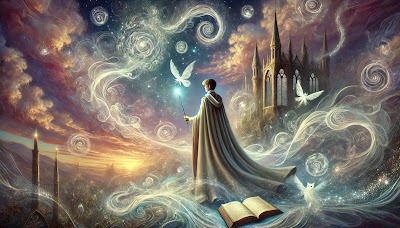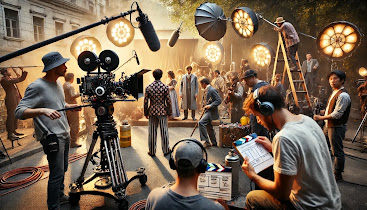Introduction: Overview of Literary Theories
Much like the analysis of literature, the study of film benefits significantly from various theoretical frameworks. Literary theories provide critical tools to analyse narratives, themes, and structures, expanding our understanding of cinematic language and its implications. This paper will explore how various literary theories—including structuralism and semiotics, feminist and postcolonial perspectives, and psychoanalytic theory—can be effectively employed in film studies to deepen our comprehension of films as complex texts.
Structuralism & Semiotics: Viewing Film as Text
Structuralism and semiotics form the basis for analyzing films as texts that communicate meaning through signs. Structuralism posits that meaning arises from the relationships and structures that govern narratives, characters, and settings. In film, this can be observed through the organization of sequences, the use of motifs, and the interplay of visual and auditory elements.
Semiotics, the study of signs and symbols, further enhances this approach by allowing scholars to decode the various elements of film—such as cinematography, mise-en-scène, and editing—as a constellation of signs that convey deeper meanings. For instance, in analyzing a film like "Inception," one could explore how recurring motifs such as dreams and reality function as signs that reflect broader themes of identity and perception.
By applying these frameworks, films can be understood not just as narratives but as complex systems of signs that reveal cultural ideologies and societal constructs. This perspective opens up discussions about how visual storytelling parallels literary storytelling, identifying shared narrative structures that resonate across mediums.
Feminist and Postcolonial Perspectives: Analyzing Film Through These Lenses
Feminist and postcolonial theories provide critical lenses through which to examine the representation of gender and race in film. Feminist film theory interrogates how women are portrayed in cinema, scrutinizing the dynamics of the male gaze, narrative agency, and the construction of female identities. For example, in films like "Thelma & Louise" or "Black Panther," feminist interpretations can analyze how female characters challenge traditional gender roles and societal expectations.
On the other hand, postcolonial theory allows for an examination of how films represent (or misrepresent) cultures and identities shaped by colonial histories. This perspective can be seen in films such as "Slumdog Millionaire," which invites discussions about Western representations of Eastern countries and the implications of such portrayals on global perceptions of identity and power dynamics.
Through these theoretical lenses, films are not only viewed for their entertainment value but also as texts that reflect, reinforce, or contest sociopolitical realities, enabling audiences to engage critically with the issues of representation and power.
Psychoanalytic Theory: Understanding Characters and Narratives
Psychoanalytic theory offers a unique approach to understanding film characters and narratives through the lens of the unconscious mind. Sigmund Freud's concepts of desire, repression, and the symbolic can help us decipher hidden meanings within character motivations and plot developments. For instance, a film like "Fight Club" invites psychoanalytic analysis through its exploration of identity, masculinity, and the duality of self.
Freudian concepts can be extended to examine character relationships and conflicts that reflect deep-seated anxieties and desires. By analyzing films with psychoanalytic tools, viewers can uncover the underlying psychological elements that drive narratives and shape character arcs, revealing the complexities of human behaviour depicted in cinema.











.jpeg)
.jpg)











